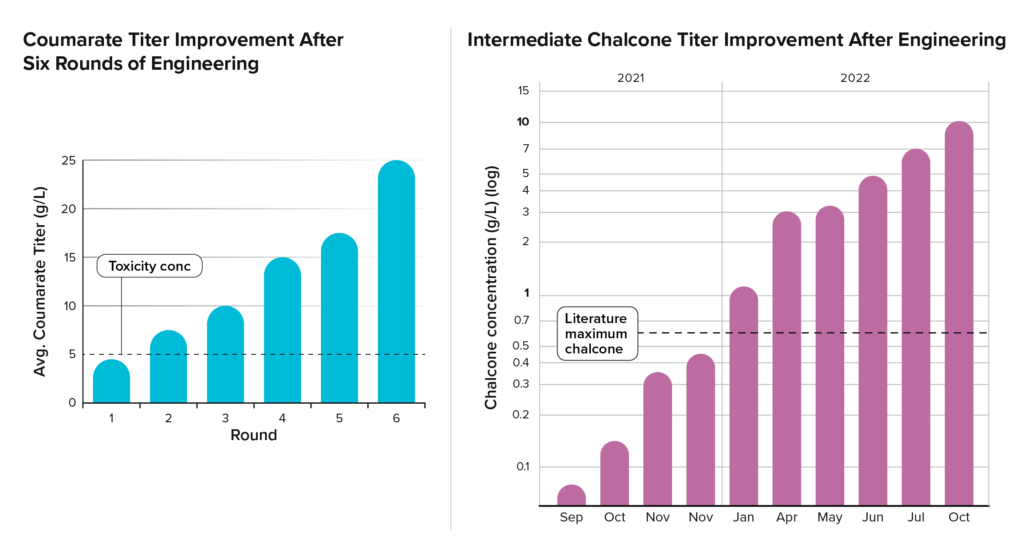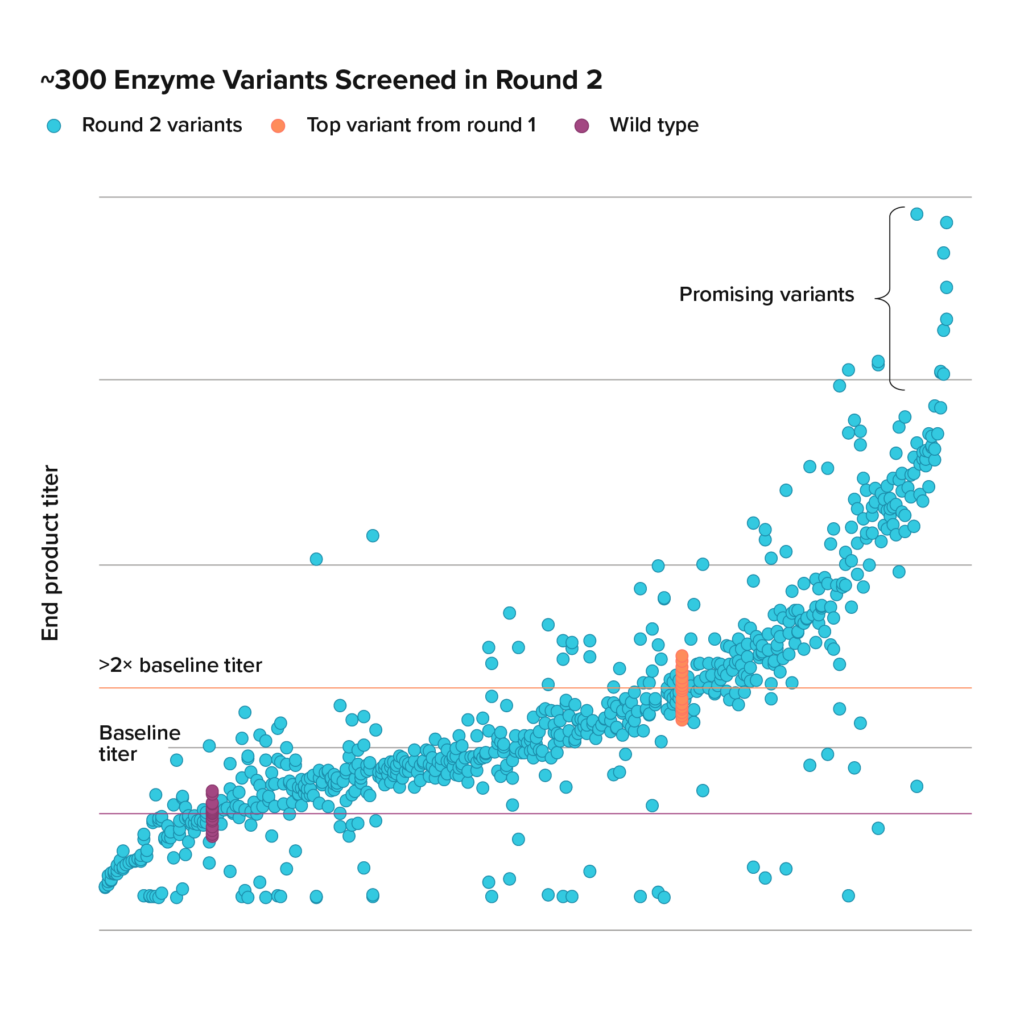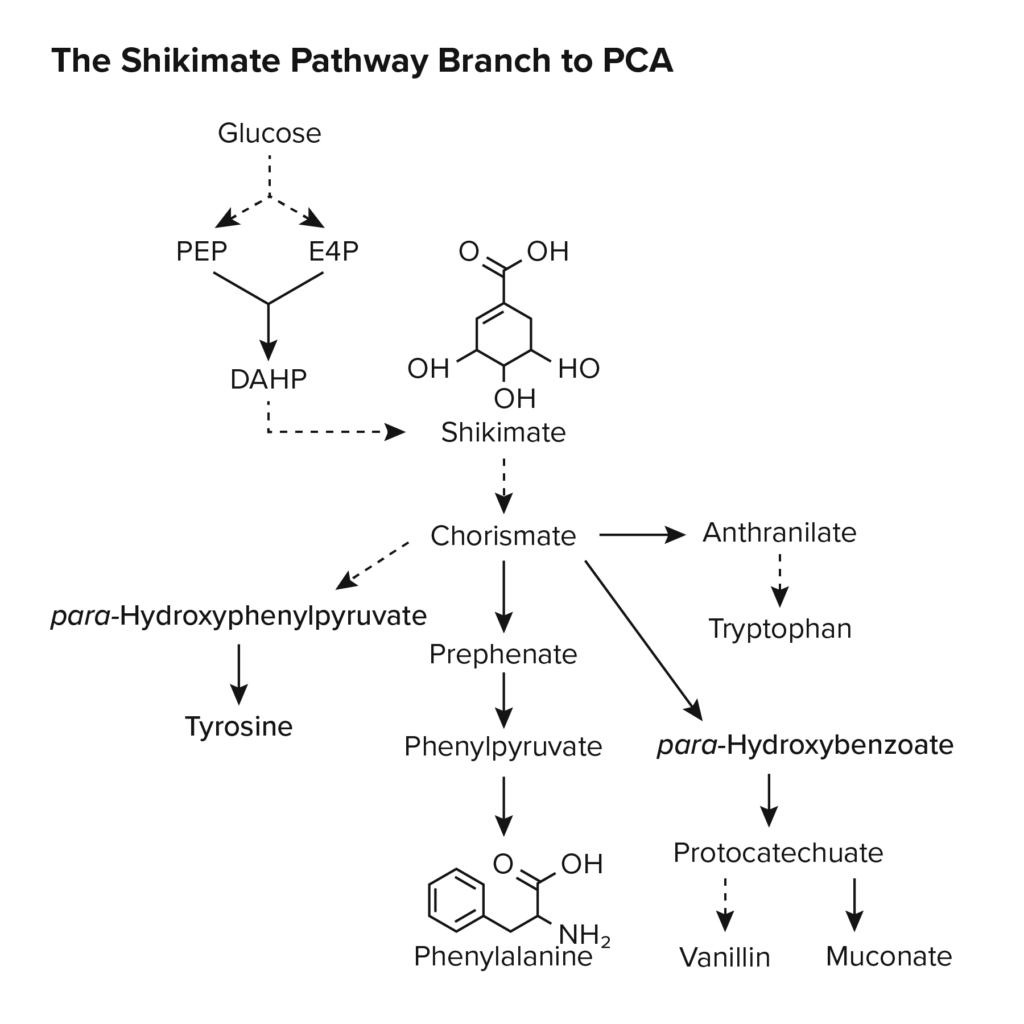Synthetic biology offers routes for manufacturing a diverse array of aromatic molecules from renewable feedstocks. Through enzyme optimization, metabolic engineering, and directed evolution, microbes can be engineered to produce high titers of specialty chemicals in industrially-relevant fermentation conditions.
But commercial and scientific leaders across the chemical industry routinely ask:
- Can bioproduction routes achieve scale and match production costs of incumbent methods?
- How much R&D investment is required to develop commercially viable bioproduction strains and what risks does that investment come with?
- What novel molecules or properties does bioproduction enable?
In this whitepaper
Overview
We demonstrate the impact of taking a platform approach to synthetic biology R&D. We focus on three commercial programs currently underway to produce aromatic molecules in yeast. In each program, Ginkgo is de-risking a partner’s R&D and commercial objectives by applying scale and utilizing iterative learnings from previous programs.

Aromatic Molecules for Nutrition and Wellness
The first program highlights significant progress toward producing a target molecule in yeast for the first time publicly reported. Through iterative rounds of enzyme discovery and optimization, this program yielded a chassis strain with high flux through coumarate, a key bottleneck along the path to the target molecule and variety of other aromatic molecules.

Aromatic Molecules for Food Colorants
Leveraging this prior work – the “coumarate chassis strain” – a second program for a partner involved in the production of food ingredients had an advanced starting point. Their target is a different set of aromatic molecules produced in yeast downstream of coumarate.

Aromatic Molecules for Bio-based Material Intermediates
Finally, a third program aims to produce two aromatic molecules, bio-based intermediates for materials, in yeast. This program similarly leverages an advanced starting point – a yeast chassis strain with significant flux through a shared precursor: protocatechuate.

A Framework for Choosing a Target Molecule for Bioproduction
We close with our recommended approach for identifying which aromatic molecules could be good candidates for bioproduction. Specifically, we walk through the factors that inform a technoeconomic analysis so that commercial and technical leaders are aligned on the costs and the value of undertaking bioproduction R&D.
"*" indicates required fields
